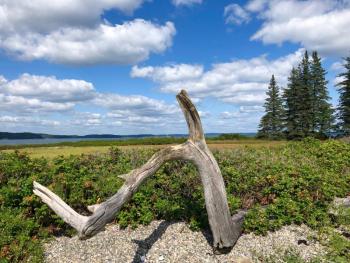Hello, Summer!
Summer moves into Maine at 4:50 p.m., Thursday, June 20. Living at latitude 44.18, we have the short bittersweet days of winter, when light compresses into a mere seven or eight hours. But then we are graced with beautiful and languorous days of late spring and early summer, when skies begin glowing before 4 a.m. and don’t fully darken until 10 p.m.
Who could ask for more!
On June 20, the sun will reach its northernmost point in the sky, +23.5 degrees above the celestial equator. This marks the moment when it feels like we are nearest the sun, before we start rotating the other way. You know. Toward winter.
On June 20, sunrise is at 4:55 a.m. and sunset is at 8:26 p.m. Daylight length will be 15:31:36. Contrast that with winter solstice, Dec. 21 — the shortest day of the year, with daylight at 8:51:02.
According to timeanddate.com: “In terms of daylight, this day is 6 hours, 41 minutes longer than on December Solstice. In most locations north of Equator, the longest day of the year is around this date.
“The earliest sunrise is on June 14 or June 15. The latest sunset is on June 26.”
From NOAA
The summer solstice occurs at the moment the earth's tilt toward from the sun is at a maximum. Therefore, on the day of the summer solstice, the sun appears at its highest elevation with a noontime position that changes very little for several days before and after the summer solstice.
The summer solstice occurs when the sun is directly over the Tropic of Cancer, which is located at 23.5° latitude North, and runs through Mexico, the Bahamas, Egypt, Saudi Arabia, India, and southern China. For every place north of the Tropic of Cancer, the sun is at its highest point in the sky and this is the longest day of the year.
The winter solstice marks the shortest day and longest night of the year. In the Northern Hemisphere, it occurs when the sun is directly over the Tropic of Capricorn, which is located at 23.5° south of the equator and runs through Australia, Chile, southern Brazil, and northern South Africa.


























